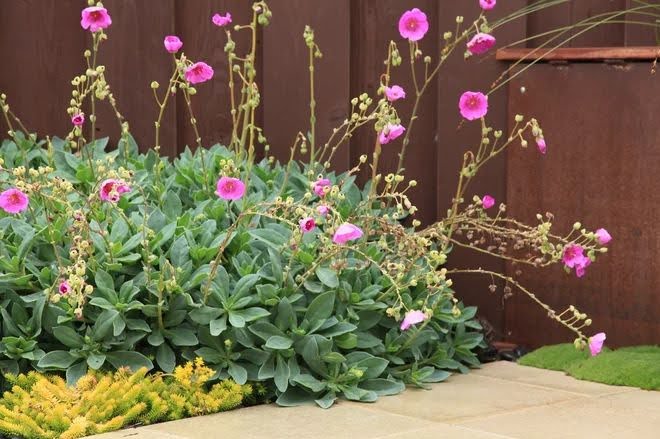Rock purslane, also known as Cistanthe grandiflora (formerly Calandrinia spectabilis), is one of those rare succulents that seems too good to be true. With stunning fuchsia blooms, drought tolerance, and frost resistance, it’s no wonder this easygoing plant is quickly becoming a favorite among succulent lovers and beginner gardeners alike.
What Makes Rock Purslane a Standout Succulent?
This resilient beauty is beloved for its long blooming period, vibrant color, and low-maintenance nature. Whether you’re new to gardening or a seasoned green thumb, rock purslane offers rewards without the fuss.
Key features:
- Fuchsia pink-purple flowers bloom for months.
- Attractive blue-green succulent foliage.
- Cold hardy to around 15°F (USDA Zone 8).
- Drought-tolerant and thrives with minimal water.
- Spreads as a weed-suppressing ground cover.
Ideal Growing Conditions for Rock Purslane
🌼 Flowering Habits
Few succulents match the blooming endurance of Cistanthe grandiflora. In regions like Northern California, expect flowers from April through fall. In milder climates such as Southern California, blooming can occur almost year-round. The flowers open mid-morning, close by sunset, and also shut during windy spells. No deadheading needed—just enjoy the show!
❄️ Cold Tolerance
This succulent handles frost surprisingly well. It’s hardy down to about 15°F, making it a great option for Zone 8 gardeners. Even with multiple frosts in the Bay Area, established plants rarely suffer damage.
💧 Water Needs
Rock purslane is incredibly drought tolerant. Once established, it can thrive in hot, dry spots—even next to south-facing walls with no irrigation. Occasional watering may boost blooming, but the plant is perfectly content with little to no supplemental water.
☀️ Sunlight Requirements
Grow in full sun to part shade. It handles both, but partial shade can help prevent leaf scorching, especially in hot zones. Foliage may take on a reddish tint if exposed to intense sun and heat for too long.
Rock Purslane Foliage and Growth Habit
Calandrinia spectabilis, often still referred to by its former name Cistanthe grandiflora, forms dense clumps of bluish-green, fleshy foliage that bring texture and structure to any garden. While the plant maintains a tidy and attractive appearance year-round, older leaves may occasionally drop, exposing bare “necks.” To keep Calandrinia spectabilis looking its best, simply trim these back during the winter months and apply a layer of compost to encourage fuller, more vigorous regrowth in the spring. This drought-tolerant succulent spreads quickly, forming a lush, ground-hugging mat that can reach up to 10 feet wide and 5 feet deep. Its ability to naturally suppress weeds without becoming invasive makes it an excellent choice for eco-friendly landscaping and erosion control.
How to Propagate Rock Purslane from Cuttings
Propagation is a breeze with this plant. If you love your rock purslane and want more, follow these easy steps:
✂️ Taking Cuttings
- Take cuttings early in the day when the plant is well-hydrated.
- Use clean pruners or snap off 3–4 node segments.
- Cut between nodes (the internode), leaving a stub below the bottom node for better rooting.
- Dip the cut ends in the rooting hormone.
- Let the cuttings dry for 2–3 days to form a protective callus.
🪴 Prepare the Propagation Mix
Use a well-draining soil mix, ideally:
- 1:1 ratio of organic (peat/compost) and inorganic (perlite/pumice) materials.
- Or, go fully inorganic: 50% vermiculite + 50% perlite—great for moisture retention and drainage.
Avoid using animal manure, which can introduce salts harmful to young roots.
🌱 Planting Your Cuttings
- Pre-moisten the soil and use a pencil to make planting holes.
- Insert cuttings deep enough to stay upright—about one-third of the way into the soil.
- Place in bright indirect light or dappled outdoor shade to root.
Rooting Timeline and Aftercare
Rooting usually takes 2–4 weeks. You can test for root development by gently tugging on the cutting—resistance means roots are forming.
After 1–2 months, transplant your rooted cuttings into your garden or a container. They grow fast! In one home example, a cutting planted directly into the ground in winter reached 24” across and bloomed by midsummer.
Growing Rock Purslane in Containers or Indoors
Although typically grown outdoors, rock purslane can adapt to containers and even indoor environments with bright light and good drainage. Place near a sunny window and avoid overwatering.
Final Thoughts
Calandrinia spectabilis, also known as rock purslane, is a low-maintenance succulent that delivers high visual impact with minimal effort. This vibrant plant can bloom for months, withstand drought conditions, and even survive frost, making it ideal for low-water gardens. Its ease of propagation means you can quickly expand your collection or share starts with others. Whether planted in the ground, a container, or grown indoors, Calandrinia spectabilis—formerly known as Cistanthe grandiflora—offers long-lasting color and beauty with little care required.
Clearing Up Confusion
Can rock purslane survive frost?
Yes, it’s hardy to about 15°F (USDA Zone 8), though damage may occur near that lower limit.
Do I need to deadhead rock purslane flowers?
No. In fact, deadheading can reduce blooms since new flowers continue forming on existing stems.
How often should I water rock purslane?
Once established, it needs very little water—only occasional deep watering during long dry spells.
Can I grow rock purslane indoors?
Yes, with bright light and proper drainage, it can adapt to indoor settings.
How long does it take to root a rock purslane cutting?
Typically 2–4 weeks, with transplanting possible in 1–2 months.
For more insights and expert advice, keep an eye on Homify Magazine. Stay inspired, stay informed!
